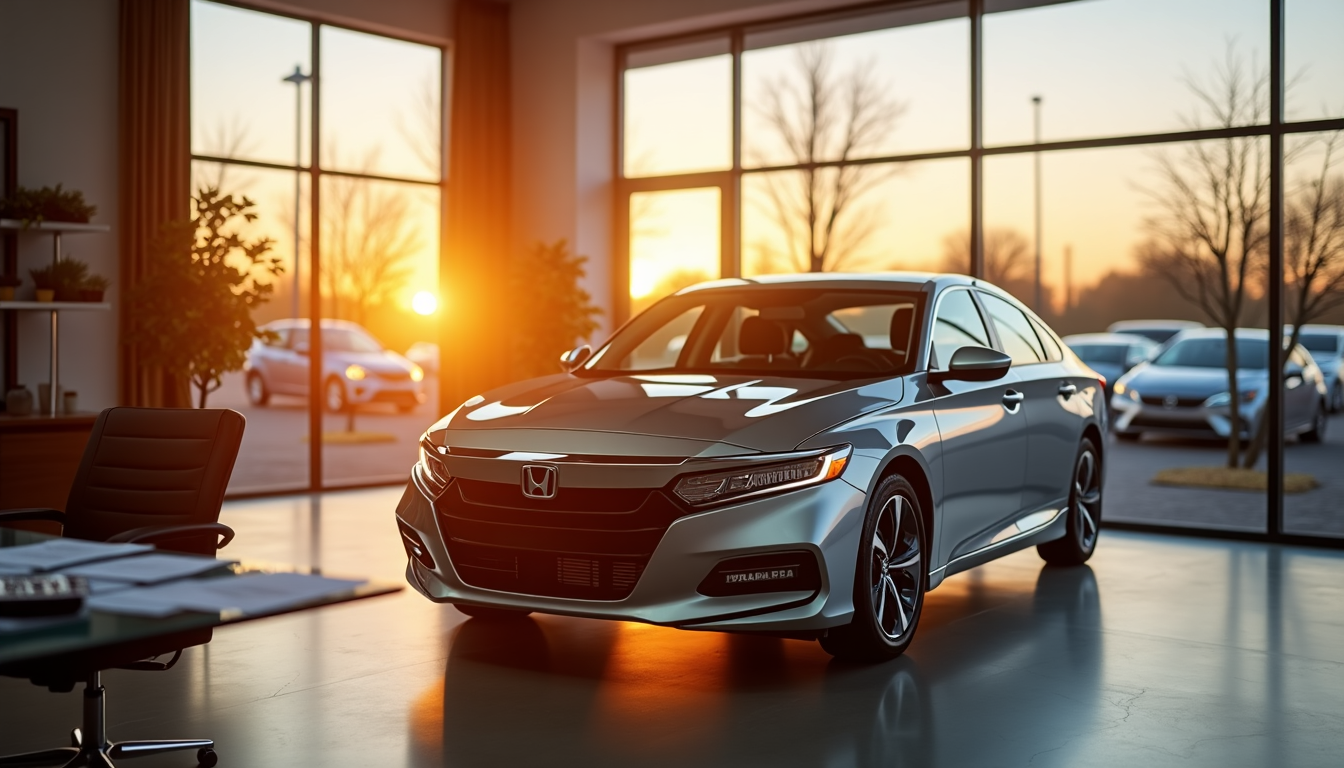Now Reading: The Truth About 100% Used Car Financing: What Banks Don’t Tell You
-
01
The Truth About 100% Used Car Financing: What Banks Don’t Tell You
The Truth About 100% Used Car Financing: What Banks Don’t Tell You

Smart buyers who compare used car financing options save $5,000 on average. Many people rush to accept 100 percent approval used car financing without knowing the actual costs. The average used car loan interest rate sits at 11.74% compared to 6.61% for new vehicles. These “no money down” deals have serious financial consequences.
100 percent approval car loans might look attractive at first. The real question is what complete financing means for your wallet down the road. Used vehicle buyers now pay $520 monthly on average, with typical loans reaching $26,091. Lenders charge steeper rates for used models because of higher risks, especially with full financing packages. This piece will show you how to secure a used car loan without down payment. You’ll learn the best financing strategies without overpaying and discover the hidden details banks keep quiet about these convenient-looking financing options.
Understanding What 100 Percent Financing Means
A dealer’s or lender’s offer of “100 percent financing” means you can buy your next vehicle without putting any money down. This sounds great, but you need to know what you’re getting into before signing any paperwork.
What does 100 percent financing mean in car loans?
These loans are also called “no-money-down loans,” and they cover every penny of your vehicle purchase. You won’t need a down payment – just monthly payments throughout your loan term.
The loan covers more than just what’s on the price tag. A typical 100 percent approval car loan includes:
- The full purchase price of the vehicle
- Any add-ons in your contract
- Registration, title, and document fees
- Sales tax and other costs
Some lenders go beyond 100% of the car’s value to help with extra expenses. The loan-to-value ratio (LTV) can reach as high as 150%. This ratio shows how much you’re borrowing versus what the vehicle is worth.
Here’s a simple example: borrowing $35,000 for a $35,000 car gives you a 100% LTV. Add taxes and fees, and your LTV jumps above 100%. Your LTV can affect your loan approval chances and the terms you’ll get.
When is it typically offered?
Not everyone can get 100 percent approval for used car financing. Your credit score plays a vital role in getting approved.
People with good or excellent credit scores who pay their car loans on time usually qualify for no-down-payment options. Lenders trust these borrowers more and feel comfortable offering full financing.
Borrowers with lower credit scores might find it harder to get 100% financing. Most lenders see them as risky and ask for down payments. But there are some exceptions:
- Credit unions and certain financial institutions give 100% financing on new and used vehicles as a member perk
- Military credit unions often have 100% financing deals
- Buy-here-pay-here (BHPH) dealerships might skip the down payment for buyers with bad credit, but charge higher interest rates
Lenders and dealers sometimes team up to push these loans during sales events or to clear inventory. Some offer full financing on specific car brands based on market conditions.
Loan terms vary a lot. New vehicles can get terms up to 72 months, while used vehicles usually max out at 60 months. Your loan term affects your interest rate – shorter terms usually mean better rates.
Knowing how 100 percent financing works helps you make smart choices about used car financing. These loans need minimal cash upfront, but you should think about interest rates and long-term costs before deciding.
How to Get a Loan for a Used Car with No Down Payment
You can get 100 percent approval for used car financing if you prepare well and understand how the application process works. A no-down-payment car loan is within reach when you have the right paperwork and a good credit score.
Steps to apply for 100% used car financing
The right preparation will boost your chances of getting approved for used car financing without putting money down:
- Calculate affordability first. Figure out how much car you can actually afford with car affordability calculators. Car payment calculators help you match your budget with monthly payments for the vehicle you want.
- Check your credit score: Look through your credit report to spot any mistakes that might hurt your scores. Make sure to dispute anything that looks wrong. Lenders usually need good credit for zero down payment loans, so try to get your score up to at least 720.
- Shop around with multiple lenders. Get preapproved by different lenders before you head to a dealership. You’ll be able to compare deals and loan terms to find your best option—which could save you thousands over time.
- Apply within a 14-45 day window. Send all your loan applications during this time, and multiple credit checks will only count as one hard pull. This shopping window helps protect your credit score.
- Look at other options if needed. Your credit score below 660 might mean you need to check out bad credit auto loans. You could get someone with good credit to cosign or use your current car’s trade-in value instead of a down payment.
- Pick the shortest loan term you can. Monthly payments stay lower with 60-72 month loans, but shorter terms mean less interest and lower chances of owing more than your car’s worth.
Documents and credit checks involved
Your lender needs specific documents to check your identity, income, and where you live. Having everything ready makes approval much faster.
- Proof of identity: Driver’s license, passport, or government-issued ID with your photo and name
- Proof of income: Latest pay stubs (usually from the last month), W-2 forms, 1099 statements, or bank statements
- Proof of residence: Utility bills, mortgage/lease statements, or bank/credit card statements showing where you live now
- Vehicle information: Make, model, year, VIN, and how much you’ll pay for the car
- Insurance documentation: Proof you have liability insurance before you buy
- Trade-in paperwork: Current registration and loan papers if you’re trading in a vehicle
Credit checks work differently based on whether you want prequalification or preapproval. Prequalification uses a soft credit check that won’t hurt your score but only gives you rough estimates. Preapproval needs a hard credit check but shows you exact loan terms.
Lenders look at your debt-to-income ratio (DTI) along with your credit history. This number shows how your current debts compare to your income and helps lenders know if you can handle more debt.
Lenders who offer 100% financing usually want credit scores above 680, though some programs take lower scores. Some lenders even have special programs based on credit scores—standard for 0–599, gold for 600–699, platinum for 700–749, and titanium for 750+.
A bigger down payment or finding someone with good credit to cosign might help you get approved if your credit score isn’t great.
The Best Way to Finance a Used Car Without Overpaying
Getting the best deal on a used car loan takes some homework and smart planning. You shouldn’t just grab the first offer you see. Smart buyers know they can save thousands throughout their loan by comparing different lenders and using the right tools.
Comparing lenders and prequalification
A great first step to finance your used car is prequalification. Unlike formal applications, prequalification uses a “soft credit pull” that doesn’t hurt your credit score. This initial process shows you how much you might qualify for based on some simple information and your credit report.
Most lenders need these details to prequalify you:
- Basic personal details (name, address, date of birth)
- Social security number
- Employment status and salary information
Prequalification does more than protect your credit score. It helps you:
- Shop with confidence for cars in your price range
- Look at different term and payment options ahead of time
- Stay in control during financing
The best results come from applying with several lenders to find good rates. To name just one example, Gravity Lending shows you loans side by side without charging origination fees. Keep in mind that between two loans with similar buy rates, principal balances, and term lengths, a loan with a marked-up rate costs more in the long run.
Bank customers might also get special discounts. Bank of America gives its Preferred Rewards members rate discounts from 0.25% (Gold Tier) to 0.50% (Platinum Honors Tier).
Using loan calculators to estimate payments
Loan calculators are a great way to get the real picture of financing costs before you commit. These tools show you monthly payments and reveal how different choices affect your total costs.
Auto loan calculators need these key details:
- Loan amount (including taxes, fees, and add-ons)
- Interest rate (based on prequalified offers)
- Loan term (number of months)
- Down payment amount (if any)
Calculator results show both monthly payments and total interest paid, so you can see how small rate differences turn into big changes in overall costs. Changing the loan term shows an important fact: longer terms mean lower monthly payments, but this is a big deal as it means that you’ll pay more interest.
Another option is to customize your deal online after finding a car. This gives you realistic terms for your chosen vehicle instead of general estimates. Many calculators let you add other costs like taxes, title fees, and future maintenance.
By comparing offers from multiple lenders and testing different scenarios with loan calculators, you’ll be ready to get financing that fits your budget. This helps you avoid focusing only on monthly payments while missing the big picture of total ownership costs.
Risks You Should Know Before Accepting 100% Financing
Zero down payment and 100 percent approval for used cars might seem appealing at first glance. These financing options can lead to years of financial hardship if you don’t understand the risks involved.
What happens when your car costs more than its value
Your car loan goes underwater the moment you drive off the lot with 100% financing. This means you’ll owe more money than your car’s actual worth.
The numbers paint a clear picture – cars lose up to 20% of their value within just one year. Your loan balance stays almost the same during this time. This creates a dangerous gap between your loan amount and the car’s actual worth.
Recent data from January 2025 shows new car prices average $48,641. Used cars cost less but their value drops quickly too. Studies reveal that 46% of auto loans start underwater, with buyers owing $3,700 more than their vehicle’s worth on average.
This negative balance becomes a real headache when:
- Your insurance only covers the car’s current value after theft or total loss, not your full loan amount
- You have to sell before paying off the loan
- Money gets tight unexpectedly
The real cost of stretching out your loan
Lenders who offer 100% financing usually stretch loans to 72-96 months. This keeps your monthly payments lower. These longer terms end up costing you much more.
To name just one example, see how a $35,000 loan at 9% interest costs $6,807 in total interest over 48 months. This jumps to $12,302 when stretched to 84 months. Lenders also charge higher rates for longer terms – at 11% for 84 months, interest costs balloon to $15,340.
Your car needs expensive maintenance while you’re still paying these longer loans. Cars bought with 84-month loans are 7-10 years old before they’re paid off. You’ll need new tires, brakes, and possibly major repairs. This creates a tough situation where you’re paying for repairs and loan payments at the same time.
Smart Alternatives If You Don’t Qualify for 100% Financing
Don’t give up if you can’t get traditional 100 percent approval for used car financing. You have several good alternatives that could match your financial situation and help you get a reliable car.
Low down payment options
Getting a car doesn’t require saving thousands just because you don’t qualify for zero-down financing. Lenders now offer low down payment options that substantially reduce your original financial commitment.
You could put down just 5-10% of the car’s price instead of the standard 20%. A $15,000 used car would need only $750-$1,500 upfront. This small investment helps your loan-to-value ratio and might get you better interest rates compared to 100 percent financing.
Credit union members with less-than-perfect credit scores often receive better terms than traditional banks offer. Some manufacturers also provide special financing through their captive finance companies that need minimal down payments, especially with certified pre-owned vehicles.
Your trade-in vehicle could serve as a partial down payment. The value of your current car, even if it’s not worth much, reduces the amount you need to finance.
Lease-to-own and certified pre-owned programs
Lease-to-own programs have become a popular choice when traditional financing isn’t an option. These arrangements have relaxed credit requirements since dealerships keep ownership until you complete all payments.
Each payment during the lease period goes toward eventual ownership. The title becomes yours after fulfilling all terms. Interest rates run higher with these arrangements, but they create a path to ownership for buyers facing credit challenges.
Certified pre-owned (CPO) programs blend used vehicle affordability with extra protection. These manufacturer-backed programs typically include
- Detailed inspections (often 100+ point checks)
- Extended warranty coverage
- Special financing rates not available on standard used cars
CPO vehicles cost slightly more than regular used cars, but the extra protection and potential financing benefits make sense, especially if reliability matters to you.



